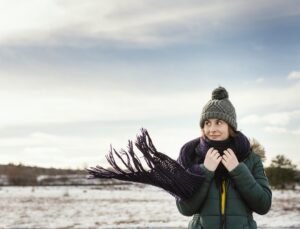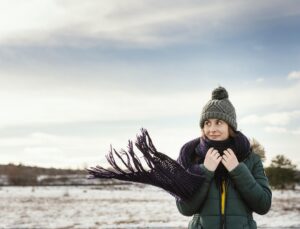The La Niña winter forecast for 2024-2025 suggests that La Niña conditions are expected to emerge and persist through the winter months. This phenomenon typically results in cooler-than-average sea surface temperatures in the central and eastern Pacific Ocean, influencing weather patterns across North America.
La Niña winter forecast 2024
For the upcoming winter, La Niña is predicted to be weak, which may lead to more variability in weather patterns. The U.S. is expected to experience a mix of mild and cold conditions, with the Northeast and Midwest likely seeing more snow than last winter. The West Coast may experience increased rainfall and snow in the mountains, particularly in the early part of the season. Overall, the winter is expected to be milder in the southern and central U.S., with potential for severe weather due to warmer air masses.

a Niña typically brings several key impacts on weather patterns:
Cooler Temperatures: It often results in cooler-than-average temperatures in the Pacific Ocean, which can influence global weather patterns.
Increased Precipitation in Some Regions: La Niña can lead to wetter conditions in the Pacific Northwest and parts of the Midwest, often resulting in above-average snowfall in these areas.
Drier Conditions in the South: The southern U.S. often experiences drier and warmer conditions during La Niña events, which can lead to droughts.
Enhanced Hurricane Activity: In the Atlantic, La Niña can contribute to more active hurricane seasons due to reduced wind shear.
Variable Weather Patterns: The impacts can vary, leading to unpredictable weather patterns, including shifts in storm tracks and temperature fluctuations.
These effects can vary in intensity depending on the strength and duration of the La Niña event.
If you’re interested in understanding more about how La Niña and other climatic events influence weather patterns, here are some great resources to check out:
- NOAA’s Climate Prediction Center offers in-depth information and forecasts related to La Niña, El Niño, and general climate conditions.
- Weather.gov is a valuable resource for tracking weather forecasts, warnings, and advisories across the U.S.
- For a broader earth science perspective, NASA’s Earth Observatory provides comprehensive articles and data visualizations on global climate phenomena.
For those keen on staying updated with the latest happenings in the world of climate and beyond, FitBizHouse’s Current Affairs section is a fantastic destination. Whether you’re interested in the intricate dynamics of climate events like La Niña or simply want to catch up on the latest buzz, this site has got you covered with engaging and insightful articles. So grab your favourite beverage, find a cosy spot, and dive into the wealth of information that awaits you!
La Niña can significantly impact winter sports, primarily through its influence on snowfall and temperature patterns:
Increased Snowfall in the West: La Niña often brings above-average snowfall to the western U.S., particularly in the Pacific Northwest and the Northern Rockies. This can create excellent conditions for skiing, snowboarding, and other snow sports in these regions.
Variable Conditions in the Midwest and Northeast: These areas might see more snow than usual, which can benefit winter sports. However, the variability in weather patterns can also lead to periods of milder weather, affecting snow quality and availability.
Drier Conditions in the South: Southern ski resorts may experience less snowfall, potentially shortening the ski season or reducing the quality of snow-dependent activities.
Impact on Ski Resorts: Resorts in regions with increased snowfall can see a boost in tourism and business, while those in drier areas might face challenges in maintaining optimal conditions for winter sports.
Overall, La Niña can create favourable conditions for winter sports in certain regions, while posing challenges in others, depending on the specific weather patterns it brings.
Historically, La Niña has had varied impacts on winter sports, particularly skiing and snowboarding:
Increased Snowfall in Certain Regions: La Niña often brings above-average snowfall to the Pacific Northwest, Northern Rockies, and parts of Canada. This can lead to excellent skiing conditions, as seen in the 2007-2008 and 2010-2011 seasons, which were marked by record snowfall and high resort visits.
Variable Impacts: While some La Niña winters have been exceptional for snow sports, others, like the 2011-2012 season, have been less favourable, with below-average snowfall and reduced participation in winter sports.
Regional Differences: Areas like Alta in Utah have experienced both above and below-average snowfall during La Niña years, highlighting the variability. Generally, northern regions tend to benefit more from La Niña’s effects.
Economic Influence: Strong La Niña seasons can boost the winter sports industry with increased sales and resort visits, while weaker events may lead to economic challenges due to reduced snowfall and participation.

Overall, La Niña’s impact on winter sports is significant but can vary greatly depending on the strength of the event and the specific region.


